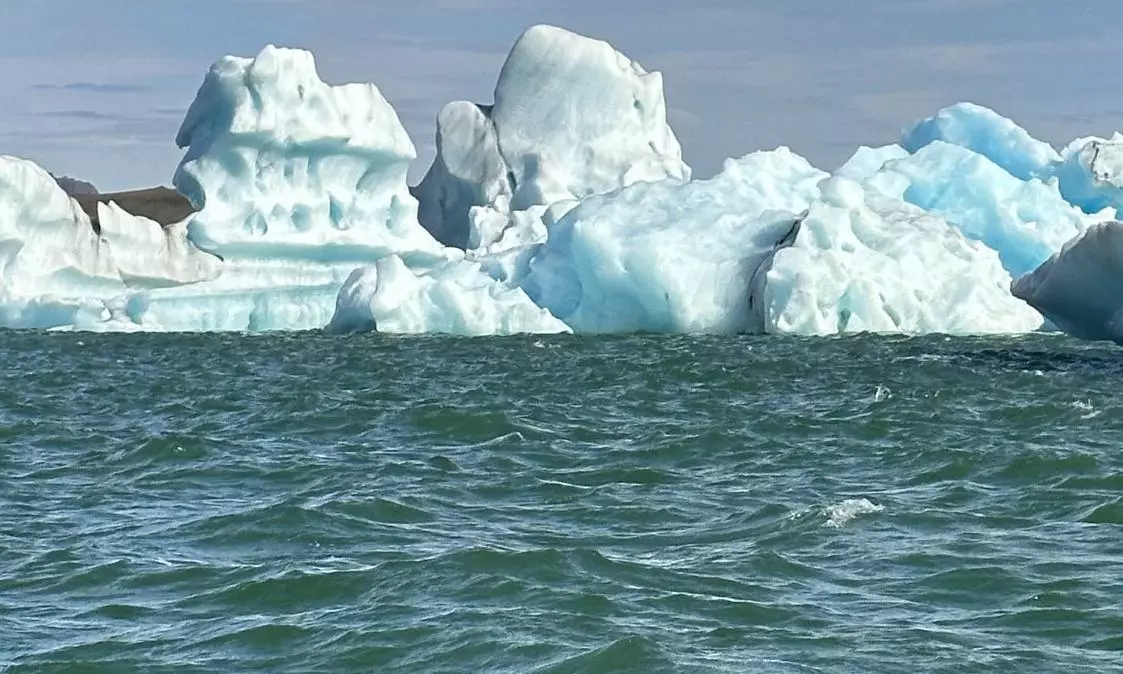
The Centre is now planning to conduct a ground study of all such lakes in the country. Photo credit: Twitter
Centre to conduct ground surveys to assess vulnerability of glacial lakes
Apart from reassessing the vulnerability of all glacial lakes in the country, the govt is also planning to set up a monitoring system

In a move that will help mitigate natural disasters, the Centre has decided to reassess the vulnerability of all glacial lakes in the country through ground surveys and establish a monitoring system to disseminate information about potential glacial lake outburst floods (GLOFs), according to government sources. The Centre will conduct the reassessment in collaboration with states.
This decision follows the devastating floods caused by the Lhonak lake outburst in Sikkim due to heavy rains earlier this month. It resulted in at least 60 deaths and extensive damage in Mangan, Gangtok, Pakyong, and Namchi districts. It also led to the destruction of the Chungthang dam, also known as Teesta III dam, a vital component of a major hydropower project in the state.
"A comprehensive assessment of the vulnerability of glacial lakes in the country is necessary. Our current understanding of these lakes is primarily based on remote sensing. We are now planning to conduct ground validations of all glacial lakes. Their vulnerability cannot be determined without this exercise," said a source at the National Disaster Management Authority (NDMA).
Glacial lakes are formed by the melting of glaciers and the accumulation of meltwater in depressions on or near the glacier's surface. GLOFs occur when these lakes suddenly burst open due to various factors, such as excessive water accumulation or triggers like earthquakes.
When a glacial lake bursts, it releases a massive volume of water, resulting in flash floods downstream. These floods can be extremely destructive and dangerous for both people and the environment in the affected area.
Given that glacial lakes are located in remote, high-altitude areas, conducting ground surveys is a challenging task, the source said. “The majority of these lakes are situated at altitudes of 5,000 meters or higher. Experts with knowledge of hydrology, topography, and other characteristics of glacial lakes, who can endure harsh weather and difficult terrain, will be part of the teams selected for ground validation exercises,” the source added.
A similar initiative was launched to install a monitoring system at Lhonak Lake around a month before the GLOF occurred. The expedition team included members from the National Remote Sensing Centre, Wadia Institute of Himalayan Geology, the Indian Army, Indo-Tibetan Border Police, the Department of Science and Technology of the Sikkim government, and the Geological Survey of India.
Another source said there is no specific deadline for completing the ground validation exercises. “The conditions of glaciers in one state may differ from another, so we will need to develop a comprehensive monitoring system. This will be transformed into an early warning system, and the entire process is expected to take at least five years and a significant effort,” the second source explained.
Larger glacial lakes pose a greater risk, so ground validation of these will be given priority.
States will play a significant role in the programme, which is expected to commence soon. The remote, harsh weather and challenging terrain will be major challenges, necessitating a focus on strengthening scientific capacity and developing instruments capable of withstanding tough weather, terrain, and topography, the source added.
(With agency inputs)

